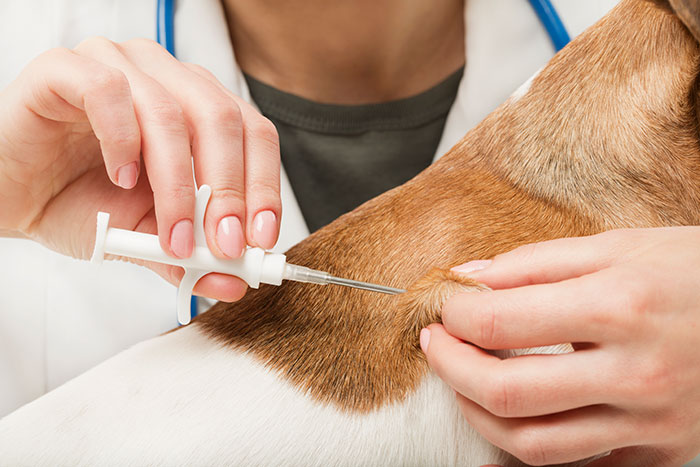Microchipping (Microchip implants and pet identification) is a reasonable and effective preventative measure for securing your pet’s presence and safety, and return.

Microchips are tiny computer chip about the size of a grain of rice that can be implanted by one of our vets. It is activated by a scanner and when scanned, transmit the identification information therein.
Losing a pet is a devastating experience. The best way to ensure your pet’s return is to make sure that he or she is properly identified.
There are several ways to identify your pet:
- Collars and tags with owner information
- A tattoo (usually placed in the ear) which is performed under general anesthetic at the time of your pet’s spay or neuter. This technique offers a visible means of identification, but can fade and become illegible over time
- A microchip which is a tiny computer chip that is placed under your dog’s skin. The microchip is activated by a scanner that can transmit identification information. This technique can be performed without any anesthesia and is a more permanent method of identification.
Tattooing or Microchipping your pet is the solution.
How is a Microchip Installed?
Contrary to popular belief, microchips do not require any anesthesia.
When you bring your pet into our office, following preliminary wellness procedures your vet will inject the microchip underneath your pet’s skin using a needle and implant the chip in that manner. It is not a very painful procedure. However, if your puppy is about to be spayed or neutered, please ask to have the implant done during the anesthesia.
How do Pet Microchips Work?
Microchips contain identification numbers and do not work as a GPS. Your pet cannot be “tracked” by being microchipped.
They are safe and do not transmit your personal information when activated.
Rather, if your pet gets lost or goes missing, when the pet is turned in to a shelter, they will scan for a microchip and it will reveal the identification number that will help populate further demographics to help locate the owner.
Typically, a microchip holds the phone number of the registry for the chip. When the animal shelter or vet scans the chip, this information is displayed. Then the registry is contacted for the owners name and phone number.
Benefits of having a microchip
- Your pet is easily located
- Unlike collars, microchips are secured beneath the skin
- It is a painless process and does not affect your pet in any way
- Once found, the veterinarian is able to access information in relation to your pet that may be useful
Microchipping and tattooing your pet can save its life if ever lost.

Follow Us!